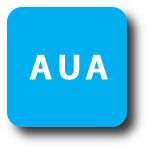ORLANDO, FL USA (UroToday.com) - Increased use of abdominal imaging over the last three decades has led to a rise in the incidental detection of asymptomatic small renal masses (SRMs), typically defined as tumors 4 cm or less in diameter, and the greatest number of cases are now found in patients over 70 years of age.
As such, increased detection at earlier stages in elderly patients has led to a significant stage migration with a concurrent increase in the median age at diagnosis of renal cell carcinoma (RCC). For patient populations that are either unfit or unwilling to undergo surgery, including the elderly and infirm, recent emphasis has been placed on the role of initial active surveillance (AS), with delayed intervention as necessary. The peer-reviewed literature regarding which masses are appropriate for AS nearly exclusively focuses on tumor size. The authors hypothesized that anatomically “simple” renal masses may be more likely to be deemed clinically less “worrisome.” To test the hypothesis, the authors compared patients who underwent an initial course of AS to those who proceeded to immediate surgery with regard to tumor anatomic complexity at diagnosis, and as measured by (RENAL Nephrometry).
 A prospective institutional database was analyzed to identify and compare patients with localized RCC undergoing an initial period of AS or immediate surgery. Multivariate logistic regression was used to examine covariates associated with receipt of AS. Following adjustment for age, largest tumor size, individual components of NS, total NS and CCI, total NS, “R” score of 1, “N” score of 1, “L” score of 1, and non-hilar tumor location increased the probability of being selected for AS compared to immediate surgery. Findings remained significant in a sub-analysis of T1a renal masses. In conclusion, the anatomical features of renal masses are associated with patient selection for AS.
A prospective institutional database was analyzed to identify and compare patients with localized RCC undergoing an initial period of AS or immediate surgery. Multivariate logistic regression was used to examine covariates associated with receipt of AS. Following adjustment for age, largest tumor size, individual components of NS, total NS and CCI, total NS, “R” score of 1, “N” score of 1, “L” score of 1, and non-hilar tumor location increased the probability of being selected for AS compared to immediate surgery. Findings remained significant in a sub-analysis of T1a renal masses. In conclusion, the anatomical features of renal masses are associated with patient selection for AS.
Click HERE to view the poster from this session
Click HERE to listen to Jeffrey J. Tomaszewski, MD, one of the authors of this study
Presented by Jeffrey J. Tomaszewski, MD at the American Urological Association (AUA) Annual Meeting - May 16 - 21, 2014 - Orlando, Florida USA
Fox Chase Cancer Center, Philadelphia, PA USA
Written by Jeffrey J. Tomaszewski, MD, medical writer for UroToday.com


